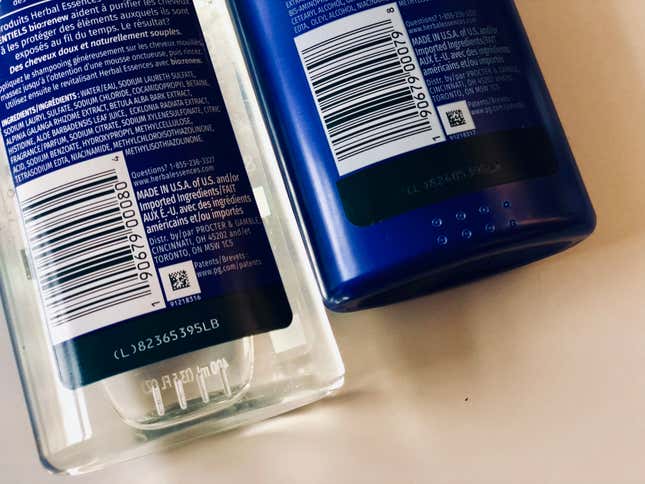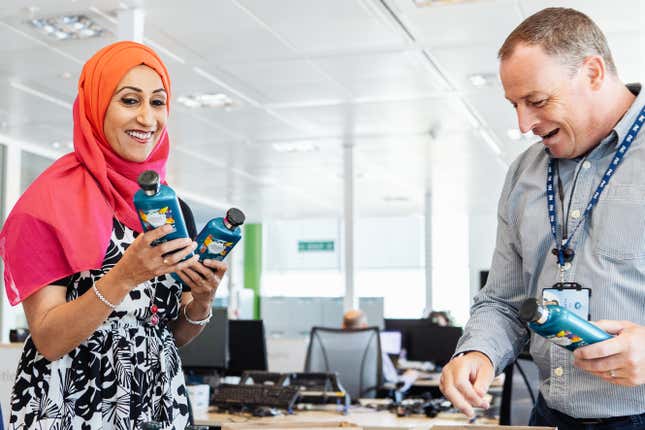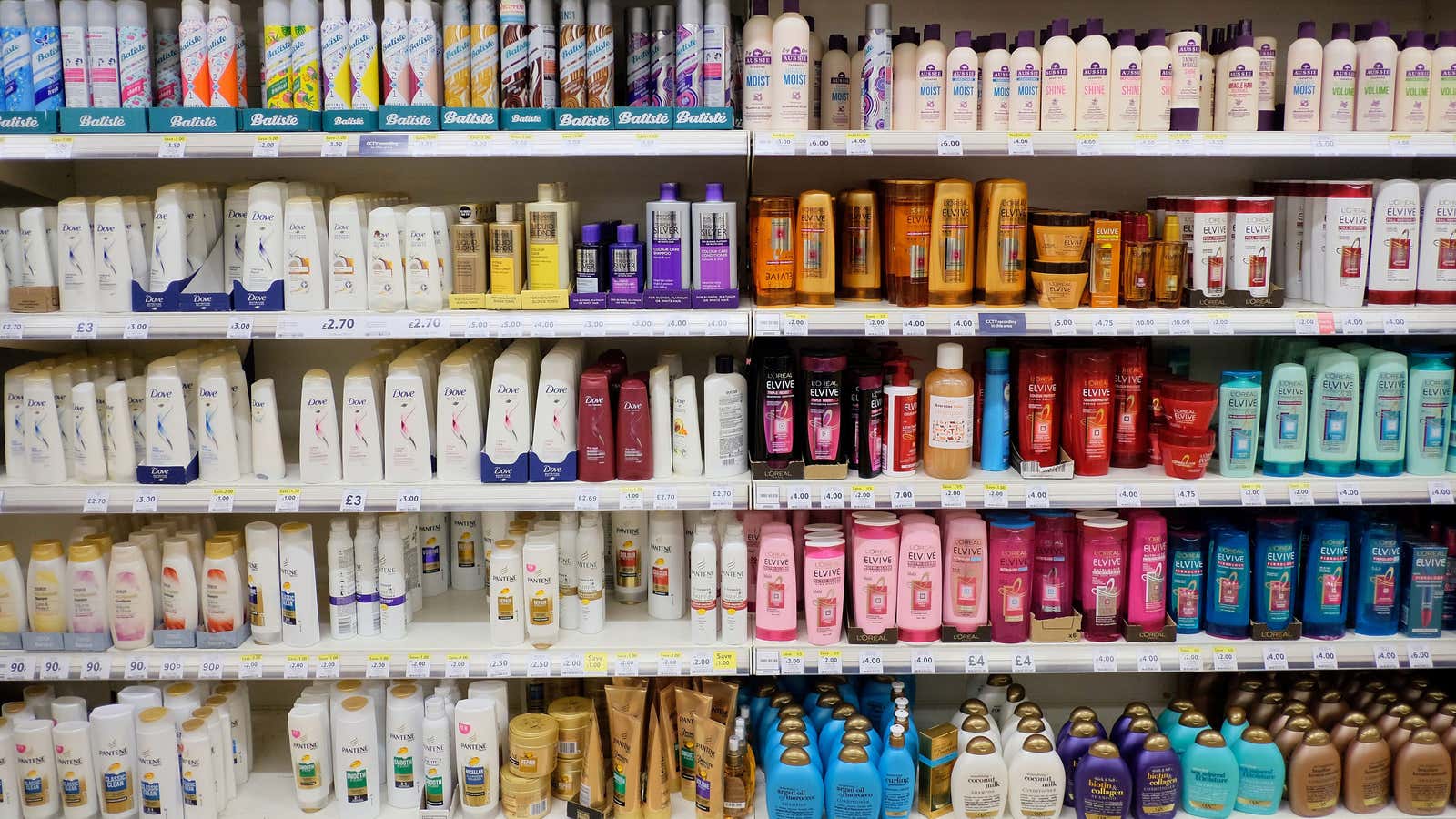In time for today’s World Sight Day (Oct. 10) Procter & Gamble has introduced an update to its shampoo bottle labeling that is intended to benefit millions of people with vision impairments. It’s a slight change that may elude most consumers: Four vertical lines on the base of the Herbal Essences plastic shampoo bottles and a grid of eight circles in the same place on the brand’s hair conditioner bottles. Mistaking the two common hair care products is a small but persistent problem that adds to the daily frustrations of blind consumers—a segment that’s typically overlooked in the product design and development phase.
The inclusive design update for shampoo bottles is a first for the 181-year old company, and a breakthrough for American mass market consumer goods in general. Since 2004, names of medicinal products in Europe have been required to be expressed in Braille on the package, but blind people in the US typically have to rely on the help of family members, kind strangers, or mobile apps to verify what they’re buying.

P&G decided not to use Braille because most people with vision impairments cannot read the 190-year old system of raised dots that takes months, if not years, to master. The US National Federation of the Blind reports that less than 10% of the country’s 1.3 million legally blind population use Braille. The so-called “braille literacy crisis” is even more extreme in the UK. The Royal National Institute of Blind People tells the BBC that fewer than 1% of the two million people with visual impairments use it.
“I was trying to make it as simple as possible,” explains Sumaira Latif, a longtime P&G IT manager who was appointed as a consultant for its inclusive design initiative. Latif, who lost her vision 16 years ago, tells Quartz that she hopes that P&G will implement the line and circle convention across its other haircare lines and other manufacturers will follow suit.

Without tactile labelling, Latif says blind people have to invent a system to distinguish their products in the shower. For instance, they may put a rubber band or a piece of tape around one bottle. Others may deliberately put the shampoo on a different shelf than the conditioner. Partially sighted people may write a big C or an S on the bottles with a Sharpie. “But it would eventually rub out because of the water,” says Latif. “Sometimes you’d forget whether the elastic meant shampoo or conditioner, or sometimes other people would remove the elastic to be helpful.” Some people with visual impairments rely on mobile apps designed for the blind like KNFP Reader, Be My Eyes, or TapTapSee—but not while they’re in the shower, of course. In every scenario, the mundane act of washing hair can become a big pain for people with vision impairments.
Adding tactile etchings on product bottles isn’t just useful for blind consumers, adds Latif. “While carrying out the research, the number of able-bodied, sighted people who tell me that they mix up shampoo and conditioner in the shower is larger than what people might think,” she says. People with bad eyesight who don’t wear corrective lenses in the shower often make this mistake, especially because branded shampoo and conditioner bottles are intentionally designed to look alike. “I want to help the world see with their hands,” explains Latif. “It might be nice to learn to use a sense that you don’t typically use. I believe the more interactive the packaging, the better your relationship with your product will be.”
Herbal Essences’s new bottle design is a hopeful sign for disabled people who aspire to live independently, but why has it taken this long in P&G’s history to make the change?
“It’s not that they’re trying to exclude people who can’t see, it’s just that they’ve never thought about it,” says Latif who has been with P&G for 18 years. She says people with disabilities have to play a role in helping companies see the gaps and possibilities. Improving products for disabled populations isn’t an act of charity, she says, but a smart business move. ”We realized that we have a massive opportunity to improve our products and packaging,” says Latif. “There are 1.3 billion people with disabilities in the world. That’s the population of China and we’re not understanding their needs.”
